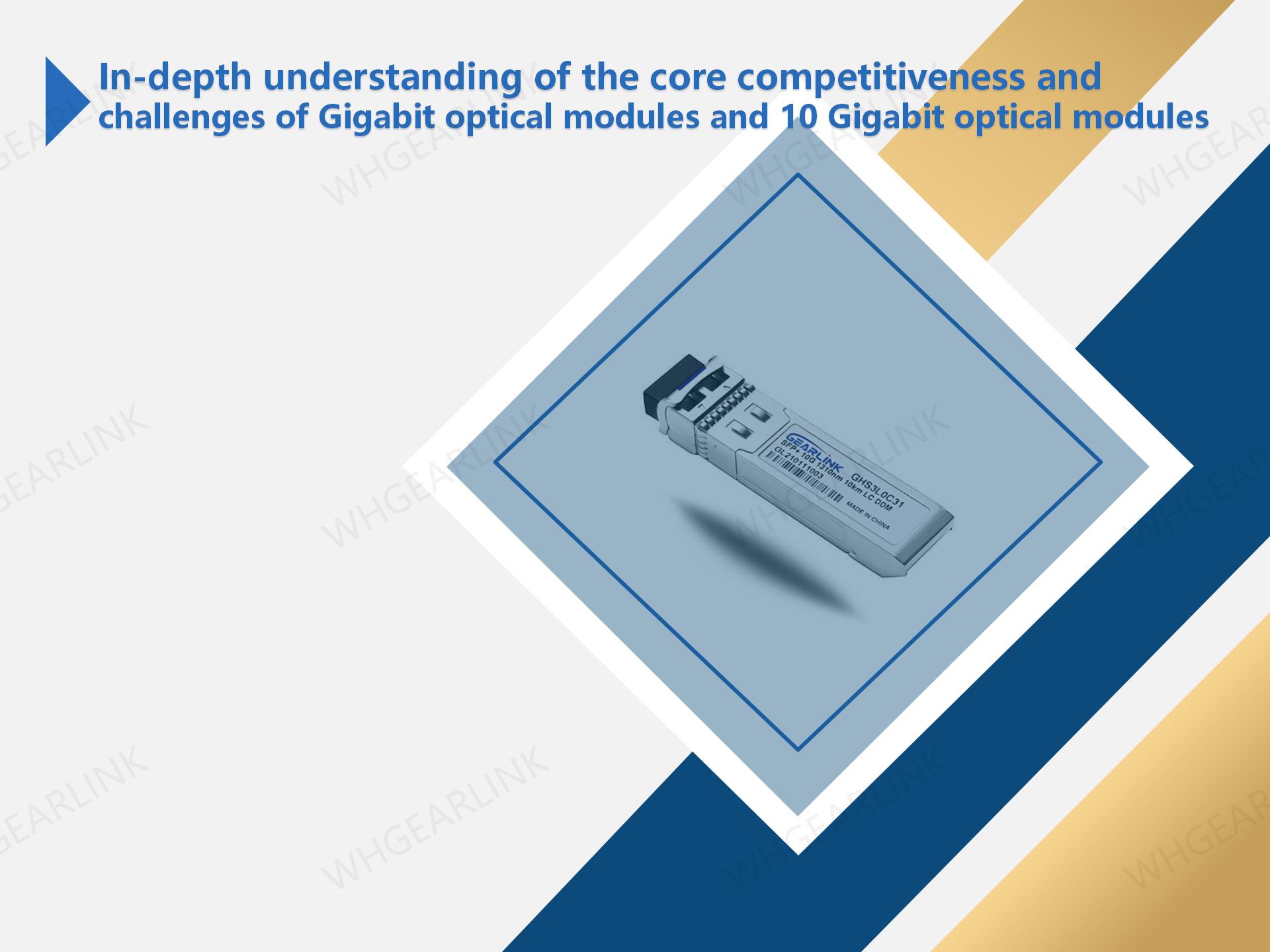This article mainly introduces the working principle, types, application scenarios and advantages of Gigabit optical transceivers and 10 Gigabit optical transceivers. At the same time, the core competitiveness and challenges of Gigabit optical transceivers and 10 Gigabit optical transceivers are described in detail.
This article mainly introduces the working principle, types, application scenarios and advantages of Gigabit optical transceivers and 10 Gigabit optical transceivers. At the same time, the core competitiveness and challenges of Gigabit optical transceivers and 10 Gigabit optical transceivers are described in detail.
Working principle
An optical transceiver is a photoelectric conversion device. It consists of two parts: the sending end and the receiving end. The sending end converts electrical signals into optical signals and transmits them through optical fibers, and the receiving end converts optical signals into electrical signals through photoelectric conversion.
SFP optical transceiver classification
There are many different models of SFP optical modules, some common SFP optical transceiver models are listed below:
1000BASE-SX
SFP transceiver for multimode optical fiber transmission, supporting a maximum transmission distance of 550 meters.
1000BASE-LX
SFP transceiver for single-mode optical fiber transmission, supporting a maximum transmission distance of 10 kilometers.
1000BASE-ZX
SFP transceiver for single-mode optical fiber transmission, supporting a maximum transmission distance of 80 kilometers or more.
BIDI (Bi-Directional) SFP
This SFP transceiver uses a single fiber for bidirectional transmission, including two different channels of TX and RX.
CWDM (Coarse Wavelength Division Multiplexing) SFP
This SFP transceiver uses multiple different wavelengths to achieve optical fiber transmission, which can achieve higher bandwidth and transmission distance.
DWDM (Dense Wavelength Division Multiplexing) SFP
This SFP transceiver uses higher density wavelengths for optical fiber transmission, which can achieve higher bandwidth and transmission distance.
SFP+ optical transceiver is a high-speed small hot-swappable optical transceiver for 10G Ethernet and optical fiber communication. The following are some common SFP+ optical transceiver models:
10GBASE-SR
Used for multimode optical fiber transmission, supporting a maximum transmission distance of 300 meters.
10GBASE-LR
Used for single-mode optical fiber transmission, supporting a maximum transmission distance of 10 kilometers.
10GBASE-ER
Used for single-mode optical fiber transmission, supporting a maximum transmission distance of 40 kilometers.
10GBASE-T
Used for copper cable transmission, supporting a maximum transmission distance of 100 meters.
CWDM (Coarse Wavelength Division Multiplexing) SFP+
This SFP+ transceiver uses multiple different wavelengths to achieve optical fiber transmission, which can achieve higher bandwidth and transmission distance.
DWDM (Dense Wavelength Division Multiplexing) SFP+
This SFP+ transceiver uses higher density wavelengths for optical fiber transmission, which can achieve higher bandwidth and transmission distance.
It should be noted that the above only lists some common SFP and SFP+ optical transceiver models, and there are other models and standards in the actual market. When selecting an optical transceiver, the appropriate optical transceiver model should be selected according to the specific network requirements and equipment compatibility requirements.
Application scenarios
Gigabit optical transceivers and 10 Gigabit optical transceivers are widely used in data centers, cloud computing, big data, wide area networks, local area networks, server interconnection and other fields. It exhibits excellent performance in large-scale data transmission and high-speed network communication.
Advantages
The advantages of Gigabit optical transceivers and 10 Gigabit optical transceivers are high speed, low energy consumption and long distance. Compared with traditional copper cables, optical fiber transmission is more stable and reliable, and is less subject to external interference. At the same time, Gigabit optical transceivers and 10 Gigabit optical transceivers have large capacity and can carry more data, which makes them perform better in high-speed transmission, long-distance transmission and network expansion.
Function upgrade and update
With the continuous advancement of technology and the continuous increase of network requirements, the functions of Gigabit optical transceivers and 10 Gigabit optical transceivers also need to be continuously upgraded and updated. This means that manufacturers need to invest in research and development and integrate the industrial chain to meet market demand and customer demand.
Increased pressure and quality assurance
The supply chain of Gigabit optical transceivers and 10 Gigabit optical transceivers is relatively complex, with multiple links and roles. Manufacturers need to follow the guidance of ISO9001 and other quality management systems from the procurement and production links, from suppliers to production processes and product quality, to ensure the high quality of products and the smooth operation of the supply chain.
Choose excellent manufacturers and suppliers to cooperate with
In the selection and supply process of Gigabit optical transceivers and 10 Gigabit optical transceivers, it is very important to choose excellent manufacturers and suppliers. Manufacturers should have a complete production process and quality control system to provide high-quality optical solutions for satellite data, optical testing, video surveillance, high-speed network transmission and other fields. Suppliers should have a good logistics system and a reasonable price policy to ensure the efficient supply and high-quality service of Gigabit optical transceivers and 10 Gigabit optical transceivers.
Emphasis on quality management and technology research and development
Manufacturers should strengthen the quality management system and technology research and development, and continuously improve product quality and performance to meet the needs of the market and customers. Manufacturers should strengthen communication and cooperation with users, understand and give feedback on market demand, carry out targeted product innovation and technology upgrades, and strengthen cooperation with industry associations, standardization organizations and other upstream and downstream enterprises to promote the development of the entire industrial chain develop.
As an indispensable optical device in high-speed network transmission, Gigabit optical transceivers and 10 Gigabit optical transceivers have a wide range of application scenarios and advantages. However, there are also some challenges and difficulties in supply chain management. Only by selecting appropriate manufacturers and suppliers, emphasizing quality management and technology research and development, can we meet market demand and continue to develop. At the same time, correct installation and maintenance are also important measures to ensure the performance and life of optical transceivers.


